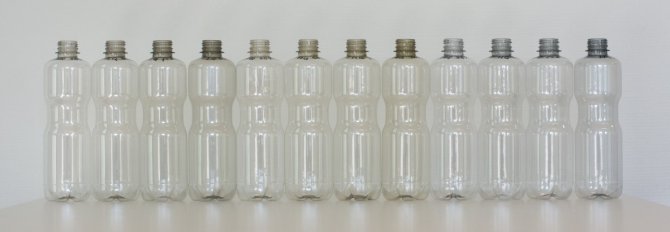
Project
Recycled PET in new bottles
Ulphard Thoden van Velzen, Fresia Alvarado Chacon, and Marieke Brouwer from Wageningen Food & Biobased Research investigated the influence of the origin and concentration of recycled PET (rPET) in PET bottles on migration, discoloration, and strength. The insights from this research can be used by the packaging industry in their sustainability strategy.
The effect on migration, discoloration, and bottle strength
Polyethylene terephthalate (PET) is a widely used packaging material for beverage bottles. The main research question was whether, and to what extent, the use of rPET - with different origins and concentrations (compared to virgin) - has an impact on:
- the degree of migration of substances from the bottle into its content;
- the degree of haze and discoloration of the bottle;
- the stress cracking resistance of the bottle.
The results are important for the conditions under and extent to which recycled PET can be used in the production of PET bottles. In addition, the study also provides insight into conditions that will enable us to achieve a more circular economy as well as where the possible limits lie.

A general description of the research
Three types of recycled PET available on the market with different qualities were collected for the research. Using these, hundreds of bottles were created in a systematic way at a small production location. In addition to virgin PET bottles, bottles with different concentrations of rPET were also produced, specifically: 25%, 50%, 75%, and 100% rPET. The researchers studied the migration from these bottles to the water to detect “non-intentionally added substances” (NIAS). Substances that were expected, such as ethylene glycol, acetaldehyde, limonene, and oligomers were found, but also very small concentrations of unexpected substances such as acetone, furan, benzene, and styrene. In addition, haze (a technical term for the optical transparency of the bottle) and the colour of the bottles were researched to identify the degree of greying and discolouration. Thirdly, stress cracking tests were conducted to study the stress cracking resistance of the bottles.
The general conclusion is that the quality of rPET in particular influences the material characteristics. Poor quality has a disproportionately large (negative) influence. There seem to be limitations on the proportions recycled content that can be used in PET bottles with respect to the amount of virgin PET. At relatively high percentages of rPET per bottle, the material characteristics decline.